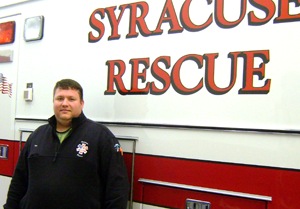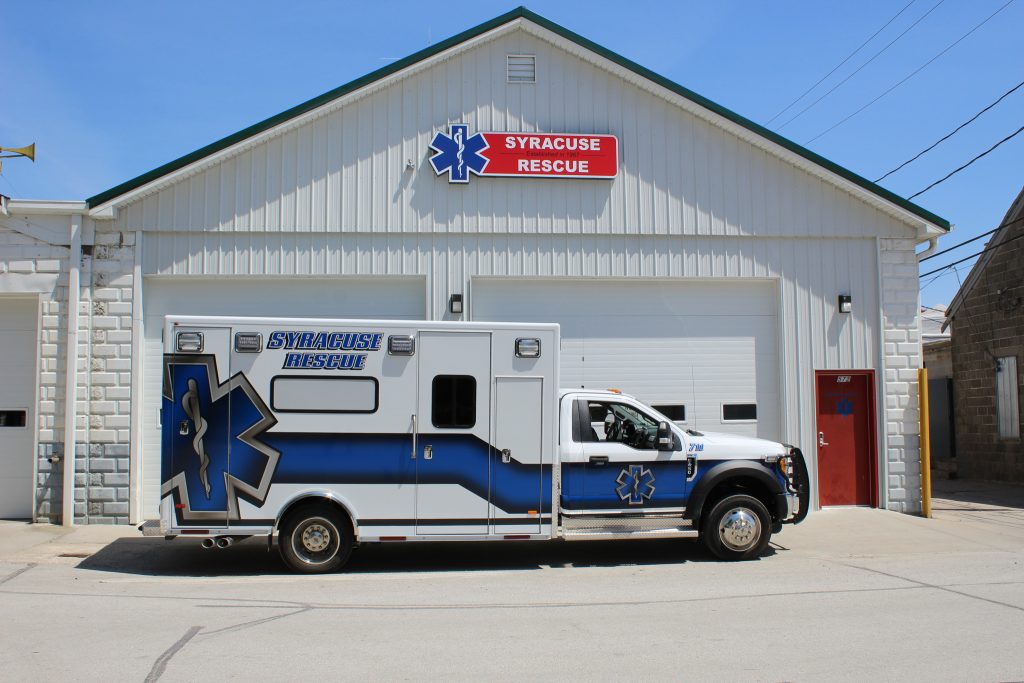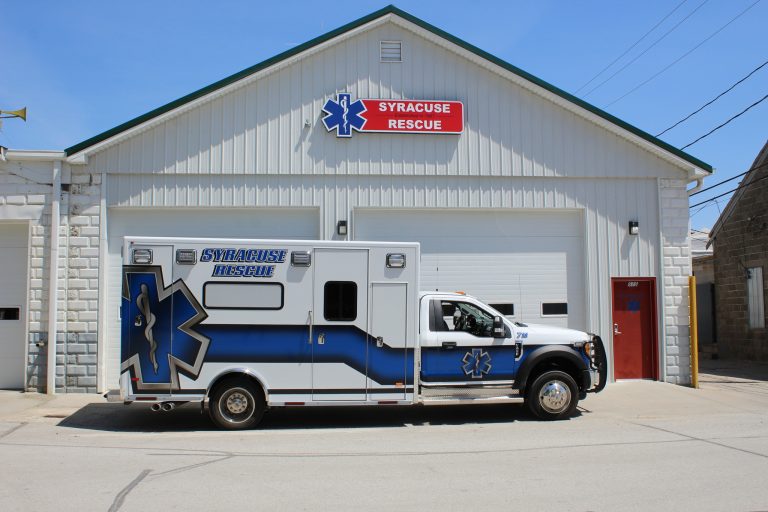Julie Davis
Following a loss of grant funding in May, Syracuse Rescue Service is exploring ways to continue an emergency medical services (EMS) telemedicine service for the community.
Syracuse was one of 26 communities across Nebraska selected to be part of the pilot program to add Avel eCare to at least one ambulance in the Syracuse Rescue Service fleet. In all, 85 Nebraska ambulances were outfitted with the ability to connect to Avel eCare during patient care on the trip to the emergency room.
Funding for this pilot project came from a $1.3 million Health Disparities grant from the Centers for Disease Control (CDC).
Tim Wilson, Syracuse Rescue Service chief and program director for the Nebraska Office of Emergency Health Systems, recently provided a community update on how Avel eCare helped treat patients, as well as how the service plans to pay Avel for an additional year.
Wilson said representatives from Avel were able to document patient care during treatment, provide patient reports to the emergency room, provide “an additional set of eyes” on the patient and the treatment to “ensure all the bases were covered,” set up helicopter transports when necessary, and even locate a Russian translator to help treat a patient injured in a car accident.
Information is transmitted to Avel through two antennas on the ambulance roof, said Wilson. The patient treatment area of the ambulance has two speakers, a multi-directional microphone, and an iPad that serves as a camera to share video between the ambulance and Avel.
Avel has a list of the service’s providers, along with inventory information of the medications and equipment that’s on the ambulance, so that its representatives can give the best information and advice possible, said Wilson.
The second year of the program was designed to give “proof of concept” to the CDC, said Wilson, but the Trump Administration ended funding for the program in May. Syracuse Rescue Service and two other EMS services are currently trying to find funding to continue the pilot program’s second year, said Wilson.
Wilson put the cost of funding the second year of the program at $30,000, and he said the service has raised about $6,000 so far. He has spoken with the Otoe County Board of Commissioners about allocating some KENO funds to continue the program for another year, and the service is looking at other ways to fund the program, including seeking additional state and federal grants, which Wilson said are becoming fewer and more difficult to obtain.
Syracuse Rescue Service provides 9-1-1 coverage to Syracuse and covers a service area of 130 square miles. The service also provides mutual aid to other Otoe County EMS services.
Wilson said the service operates on a day shift (6 a.m. to 6 p.m.) and a night shift that lasts from Friday night until Sunday morning. He said the service provides advanced life support (ALS) care because it has trained paramedic-level providers on its roster.
Syracuse Rescue Service actively recruits and accepts new members and will pay for education costs. Donations are always welcome and can be made for tax purposes through the Syracuse Foundation.
Contact Wilson at 402-269-2111 or by email at srchief@syracusene.com with any questions.




